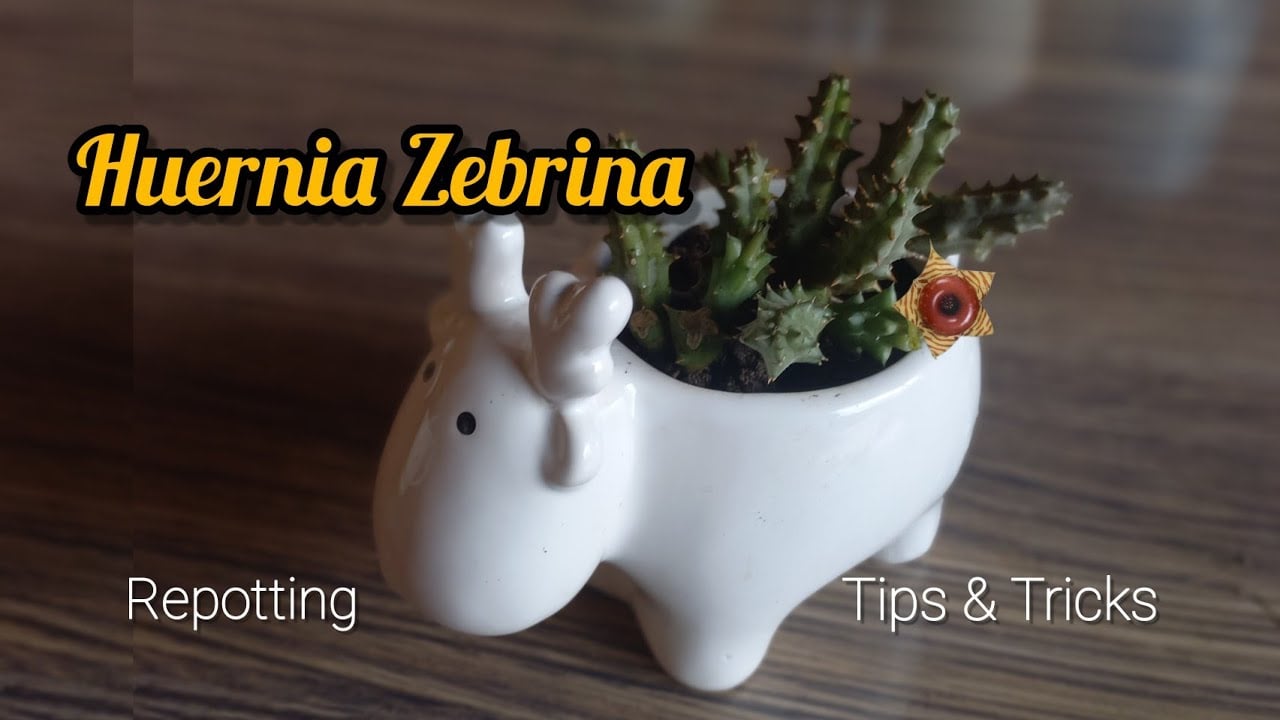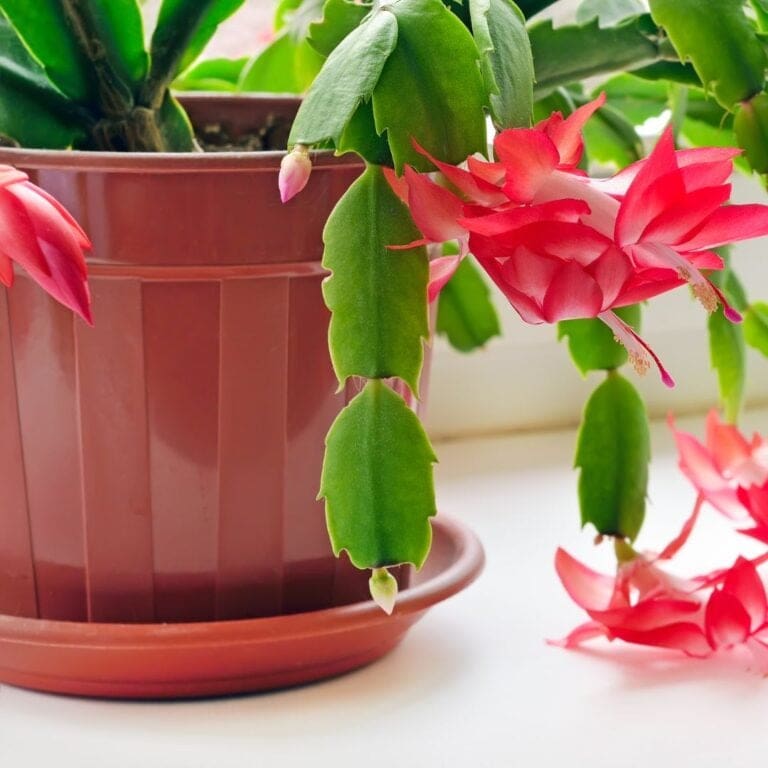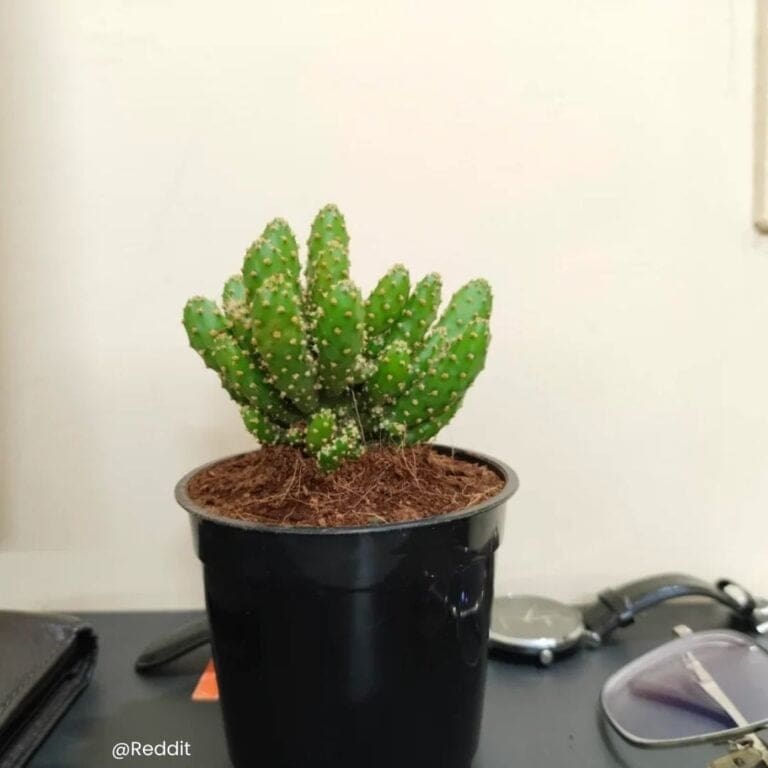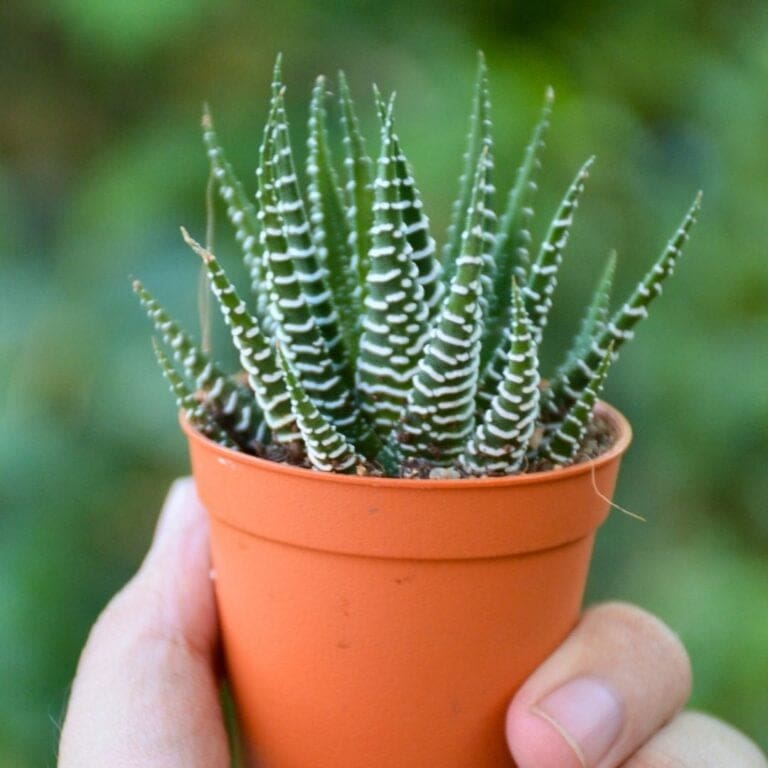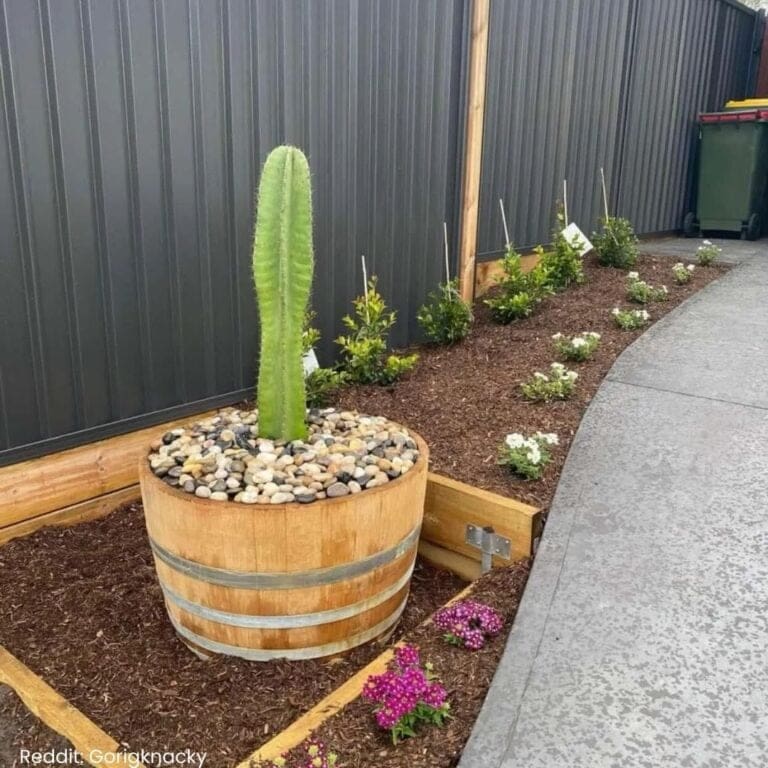Lifesaver Cactus Care
Are you curious about adding a Lifesaver Cactus to your indoor plant collection?
These unique succulents are not only striking but also pretty easy to care for.
Lifesaver Cactus thrives in bright, indirect sunlight and well-draining soil.
Remember, they don’t need too much water, which makes them perfect for beginner plant parents! 🌵
I’ve had mine for a while, and they’re truly fascinating to watch.
With their star-shaped flowers and beautiful patterns, it’s like having a little piece of art on my windowsill.
Have you ever seen a plant quite like this before?
Want to know more about keeping your Lifesaver Cactus healthy and happy?
Stick around, and I’ll share my top tips and tricks.
From watering schedules to dealing with pests, we’ll make sure your plant feels right at home. 🌞
Please note: Simplify Plants is reader-supported. As an Amazon Associate, I earn from qualifying purchases made by our readers with no extra cost added to you all! Some links in the post are affiliate links and I get a commission from purchases made through links in the post.
Understanding the Lifesaver Cactus
The Lifesaver Cactus, also known by some as the “candy cactus” because of its unique flower, is a fascinating plant.
It’s not just about looks; this cactus has some quirky growth habits and interesting origins. Let’s jump in!
Origin and Classification
The Lifesaver Cactus, or Huernia zebrina, is not from the desert like most cacti.
Guess what? It comes from southern Africa, where it enjoys a warm climate.
Isn’t that cool? In the plant world, it’s part of the Apocynaceae family. This family includes milkweeds too.
I’ve always found its name interesting.
It’s called “Lifesaver” because its flowers look like the popular candy.
Nature sure loves to play with design, right? 🌵😊 What other plant gets such a yummy name?
Physical Characteristics
Imagine a plant with thick, fleshy stems, a bit like a succulent. That’s your Lifesaver Cactus!
It generally grows up to about 3 to 4 inches tall. Not too big, so it fits perfectly on a sunny window sill.
Its most striking feature is its star-shaped flowers.
These are usually maroon with cream stripes, kind of like a zebra pattern.
Isn’t it amazing how nature imitates art? When they bloom, it’s like having mini pieces of candy scattered across my plant shelf. 🍬
Growth Habits
Lifesaver Cactus loves the sun, openly basking in bright light. Yet, it can be a bit shy with water.
Too much water, and it might sulk (or worse). So, I treat it like a camel, watered only when the soil feels dry.
When it’s happy, it produces offsets, kind of like plant babies. This means more Lifesaver Cacti!
Sharing these with friends always creates smiles and sparks conversation.
Do you know anyone who wants a candy-themed cactus? 🌵
So, there you go. It’s a mixture of sun loving, resilient, and with a hint of sweetness.
Ideal Growing Conditions
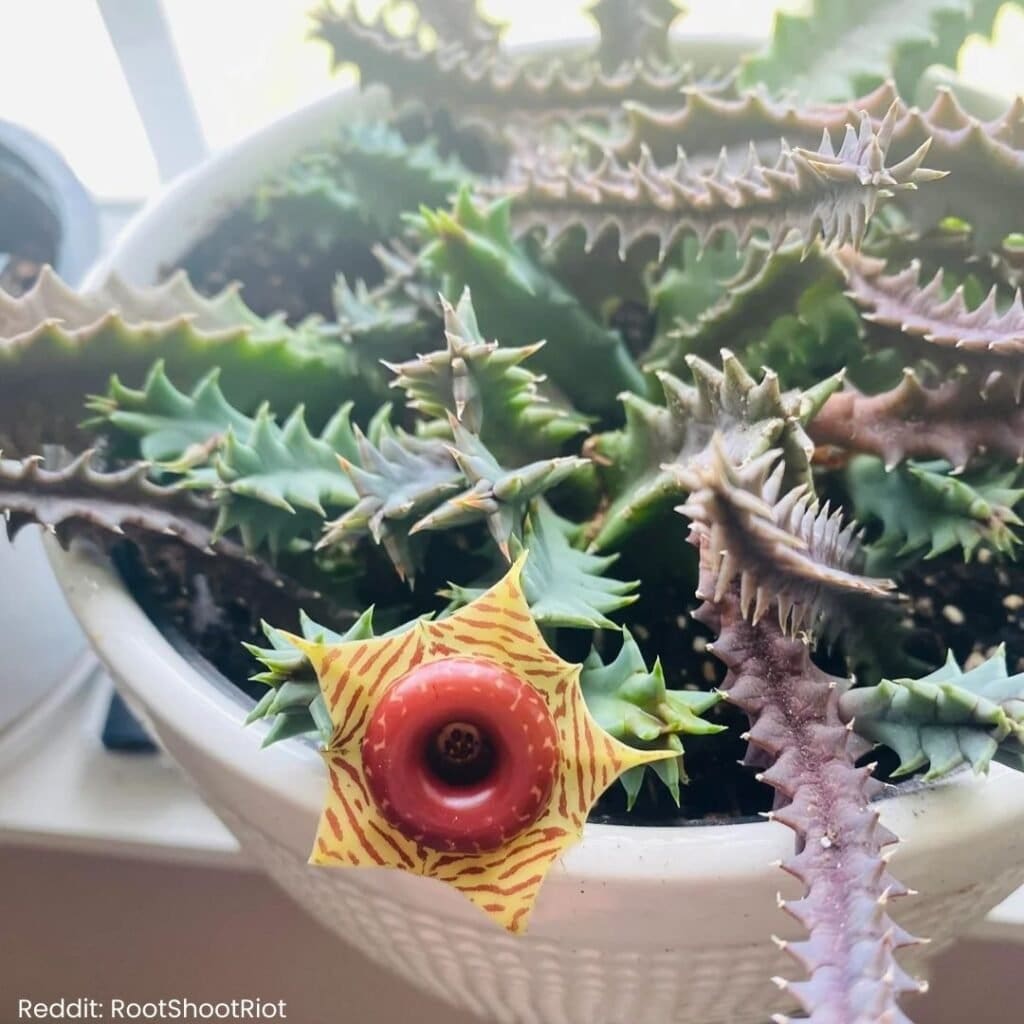
Taking care of a lifesaver cactus can be fun and rewarding.
They thrive best with bright light, warm temperatures, and just the right amount of humidity.
Let’s explore how to create the perfect home for your spiky friend. 🌵
Light Requirements
I find that lifesaver cacti love bright, indirect sunlight.
Placing them near a sunny window that gets lots of light works wonders.
Direct sunlight isn’t their best friend since it can cause burns on their skin—ouch! 🥵 If you’re placing them inside, a south or east-facing window is a great choice.
If natural light is a bit sparse, no worries! I use a grow light to give them a boost.
Just make sure it’s not too close.
Want a happy, healthy cactus? Keep an eye on its color.
If it’s looking faded or yellow, it might need more shade. Keeping a balance is the key!
Temperature Preferences
These plants are tropical at heart, loving warm temperatures.
I keep mine happy at around 70-80°F (21-27°C) during the day.
If the nighttime temps hover around 60°F (15°C), that’s perfect. Too cold? They might look sad and droopy. Too hot? They could dry out.
Be mindful of sudden temperature changes.
I steer clear of drafty areas and heaters, as these changes can upset them.
If you’re like me, you’ll notice that sometimes they like a little fresh air.
A nice breeze is fine—just don’t leave them in a chilly draft. Balance is important. Make sure your cactus stays cozy!
Humidity Considerations
When it comes to humidity, these cacti aren’t too picky.
They do fine in the same humidity levels I’m comfortable in—around 40-50%. Most homes naturally fall into this range.
If powdery mildew appears, it means things might be too humid. Placing them in a dry spot usually helps.
I enjoy using a small pebble tray filled with water under the pot.
It’s a neat trick to add just a touch of moisture around the plant.
No pebbles? No problem! Just make sure not to mist them; they don’t enjoy being soggy. Keep their feet dry!
Adding these conditions will help ensure your cactus is as happy as it can be! 😊
Soil and Repotting
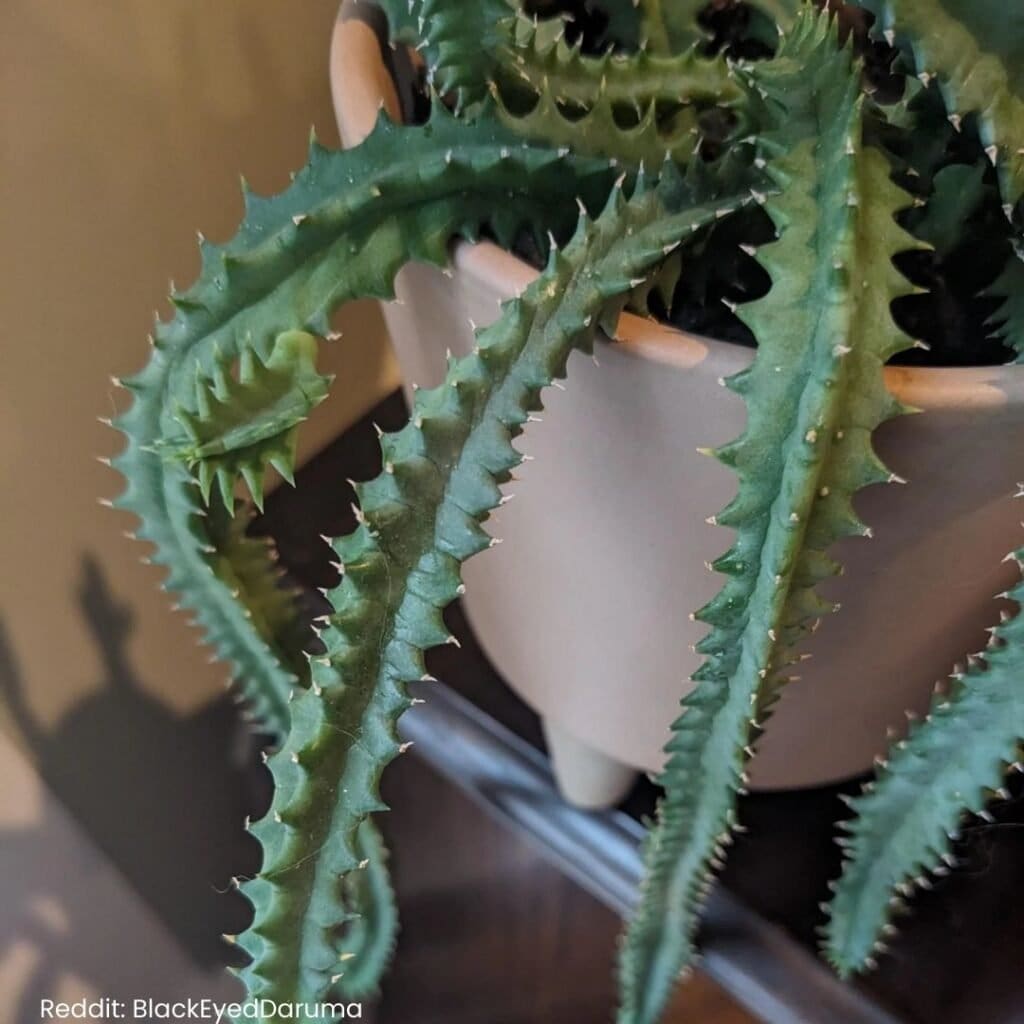
Getting the soil mix and repotting schedule just right for a lifesaver cactus can make a big difference.
It might sound tricky, but once you know what to do, it’s pretty simple! 🌵 Let’s dive into the details.
Soil Composition
When it comes to soil, lifesaver cacti have unique needs.
They prefer a well-draining mix to prevent the roots from sitting in water, which can lead to rot.
I mix cactus soil with a little sand or perlite. This keeps the soil loose and airy.
Think of it this way: too much water is like giving your cactus a bath it never wanted. 😂 Ensure your soil has good drainage to keep your cactus happy.
You can even test your soil mix by watering and checking how quickly it drains. Quick draining means you’re on the right track!
Repotting Frequency
How often do you repot?
It’s not as often as you might repot other plants. Lifesaver cacti are quite laid-back.
I repot them every two to three years. This gives the roots space to spread out and grow.
It’s like giving your cactus a bigger playground!
Look out for the following signs that your cactus needs a new pot: roots peeking out of the drainage holes or the plant looking cramped.
Repotting is usually best in the spring when the plant is coming out of dormancy. Just be sure to handle it gently. 😊
Pot Selection
When choosing a pot, remember: drainage is key!
I always go for a pot with drainage holes to let excess water escape, preventing root rot.
Clay pots are excellent because they let moisture evaporate more effectively than plastic ones.
Size matters, too. The new pot should be just a bit bigger than the old one.
Too large, and the soil might stay wet too long. Too small, and your cactus might feel crowded.
Choose wisely, and your cactus will thrive!
Do you have any favorite methods or tools for caring for your plants?
I’d love to hear about them! Let’s keep our plants happy and growing together. 🌵✨
Watering and Feeding
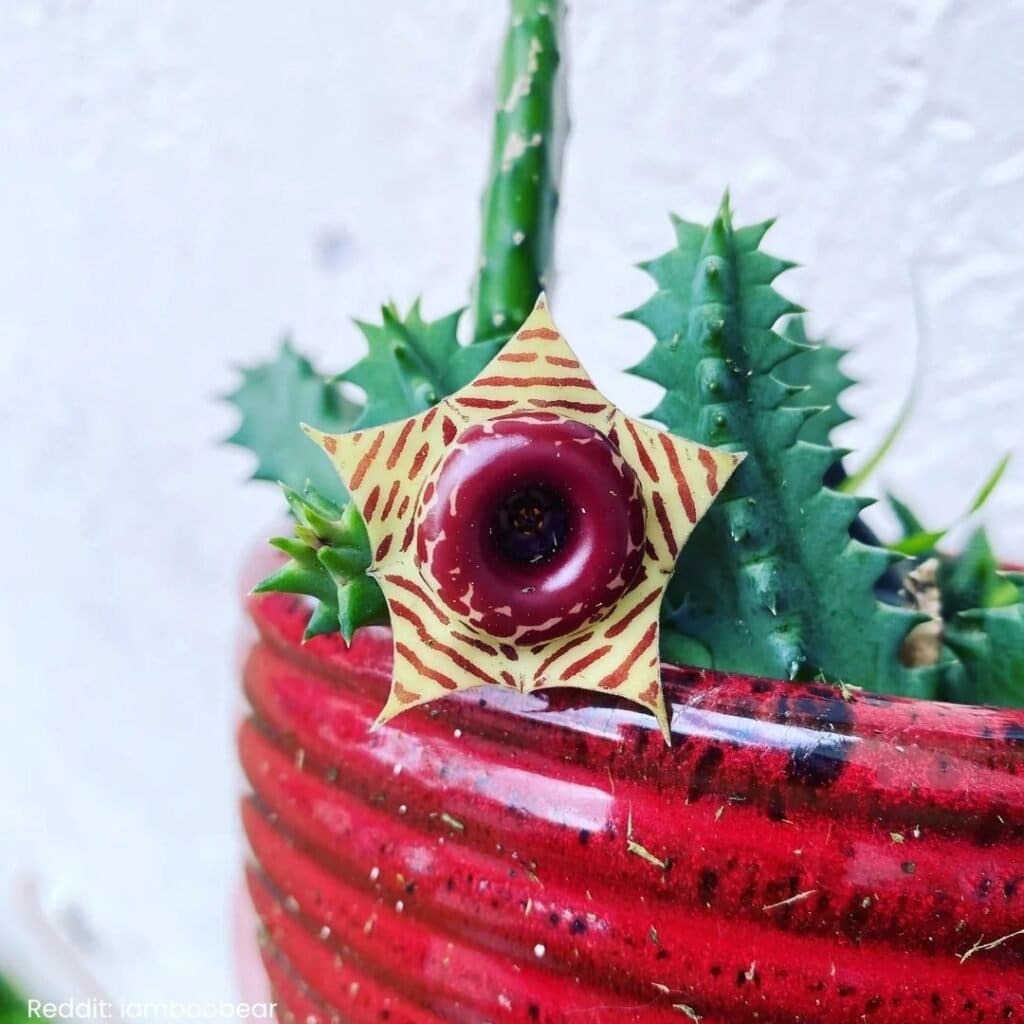
Keeping a lifesaver cactus healthy involves finding the right balance with watering and feeding.
It’s crucial to avoid overwatering and to use fertilizers wisely to support its growth 🌵. Here’s how I manage watering and feeding for this unique plant:
Watering Schedule
I usually water my lifesaver cactus every two weeks during its growing season, which is spring and summer.
In the winter, though, I cut back on watering. This plant needs to dry out between waterings.
I make sure the soil is parched before reaching for the watering can.
Sounds simple, right? Letting the soil dry prevents root rot, a common issue for these cacti.
To keep track, I set reminders on my phone, ensuring I don’t overdo it.
Signs of Overwatering
Spotting overwatering is pretty easy if you know where to look.
I watch for squishy, yellowing leaves. Another hint is a damp, musty smell from the soil which is a big red flag 🚩.
These are signs that the cactus is getting too much love on the watering front.
If I see this, I let the soil dry completely before watering again. Also, I make sure the pot has drainage holes to let excess water escape.
Quick actions help the cactus recover!
Fertilizing Guidelines
When it comes to feeding, I use a balanced cactus fertilizer every four weeks during its active growing months.
A little goes a long way here! I mix it into the water to ensure even distribution.
In fall and winter, I hold back on the fertilizer. Why? The cactus rests during these times and doesn’t need extra food.
Over-fertilizing can burn the roots, which is something I’d rather avoid. If you’re ever unsure, it’s better to under-fertilize than to overdo it.
Feeding at the right times helps my cactus stay robust and vibrant. 🌟
Pruning and Maintenance
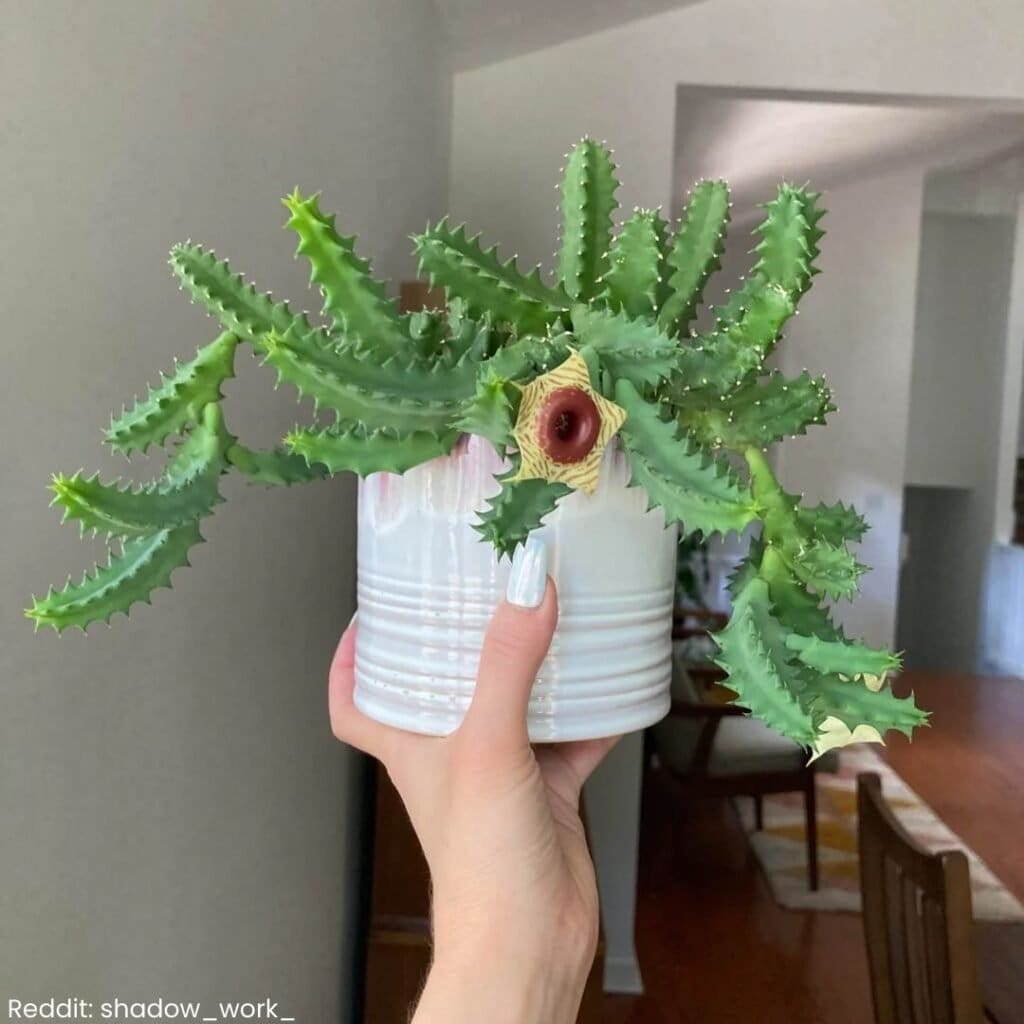
Keeping a lifesaver cactus healthy is all about proper pruning and maintenance.
Let’s dive into how to trim it right, tackle pests, and keep it thriving with some handy tips. 🌵✨
Pruning Techniques
Pruning a lifesaver cactus isn’t complicated, and trust me, you can handle it!
This cactus type benefits from light pruning to remove any dead or excess parts.
I usually grab a clean, sharp pair of scissors—it’s important to keep them sanitized.
Cut back any wilted or overgrown stems, and you’ll see new growth in no time.
Don’t go overboard because the cactus doesn’t require heavy pruning.
Do you see a stem looking a bit too long or misshaped? Snip it right off!
Regularly engage in this small act of care, and your cactus will not only look neat but also stay healthier.
And hey, it gives you an excuse to spend more time with your plant. It’s also a great moment to admire those quirky, star-shaped flowers!
Pest and Disease Management
I’ll admit, pests can be a headache for cactus owners.
The most common troubles for these cacti are mealybugs and spider mites.
You might notice some white, cottony spots or tiny webs. When that happens, take action quickly.
I find that mixing some water with a bit of mild soap works wonders.
Use a cotton swab to dab this solution on the affected areas.
Noticed anything odd lately? Regular check-ups can prevent major infestations. 😅 If problems persist, you might need a more specific pest control product, but natural solutions often do the trick!
Regular Maintenance Tips
Now, let’s talk about everyday care.
This isn’t a high-maintenance plant, which is awesome!
Be sure to keep your cactus in a spot with bright light—they love sunshine.
Water it sparingly; I water mine only when the soil feels dry about an inch down.
Overwatering is a common mistake, so less is more here. Isn’t that a relief? 🤔
Also, remember to check the soil.
If it’s not draining well, consider switching to a cactus mix.
Doing these little things keeps your cactus happy and sprightly!
Do you have your own cactus stories? Would love to hear them! 🌟
Propagation Methods
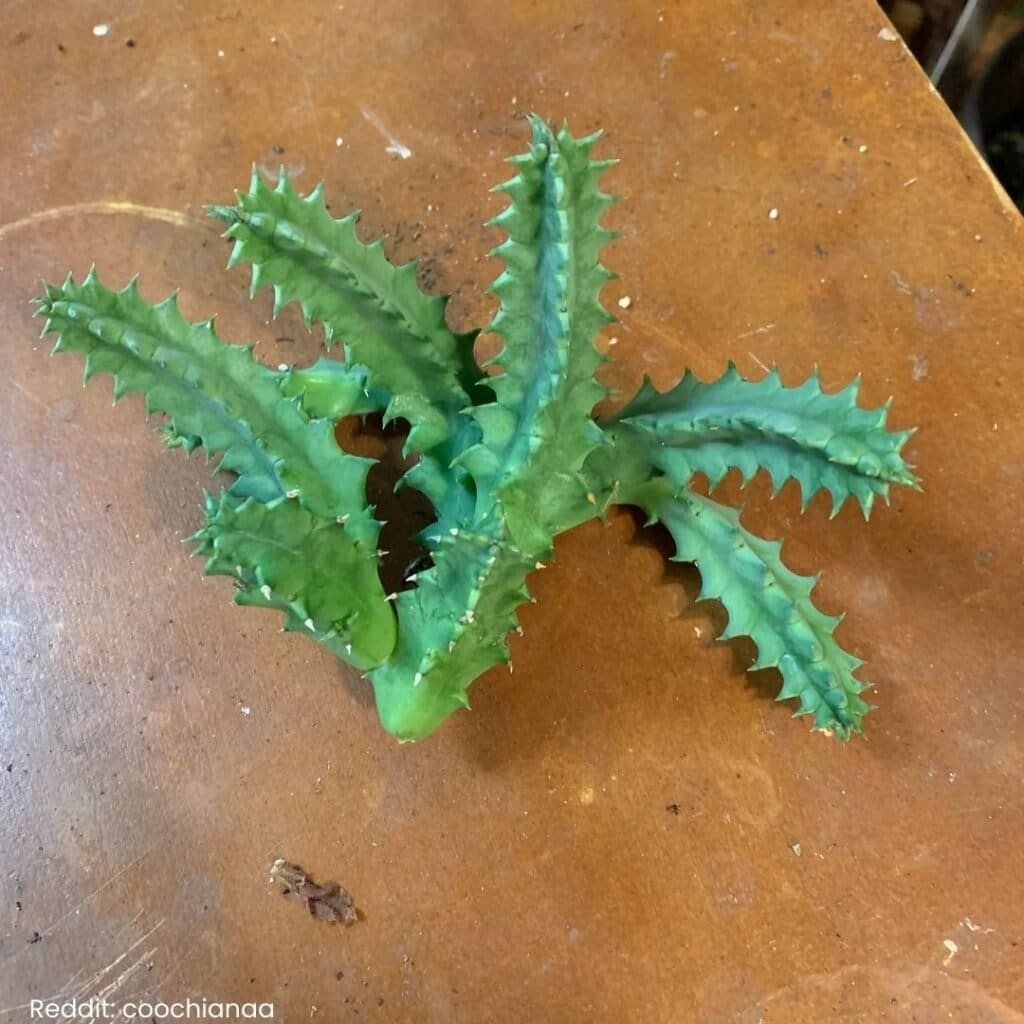
Growing lifesaver cacti can be so satisfying! 🌵 Their unique blooms and easy-care nature make them perfect for any collection. Let’s go over how to expand your plant family.
Seed Propagation
Do I have the patience to start from seeds?
Growing a lifesaver cactus from seeds is like a mini science project.
First, find fresh seeds from a reliable source. They’re quite small, so handle them with care!
I’ll need a shallow tray and cactus soil mix.
Sowing the seeds in damp soil gives them the start they need.
Once they’re nestled in, I cover them lightly with a thin layer of soil.
Next, I seal the tray with clear plastic or use a dome to keep things humid.
Can you spot the tiny sprouts? 🌱
Watch them grow by placing them in bright, indirect sunlight.
It’s important to keep the soil moist, but not soggy.
The hardest part? Waiting. It can take several weeks for them to sprout. Is patience your strong suit? 😉
Cuttings Propagation
If I’m in a hurry for a new plant friend, cuttings are the way to go!
Cutting from a healthy cactus ensures a strong start.
I gently remove a segment from my lifesaver cactus, making sure my knife is clean.
After cutting, I let the piece dry for a few days until it calluses over. Isn’t it amazing how plants adapt?
Once ready, I plant the callused end into a pot with well-draining cactus soil.
I prefer to water sparingly—just enough to encourage rooting without drowning it.
Within a few weeks, I should see new growth. Exciting, right?
Cuttings are indeed the fastest, most satisfying way to propagate lifesaver cacti! 🌟
Common Challenges
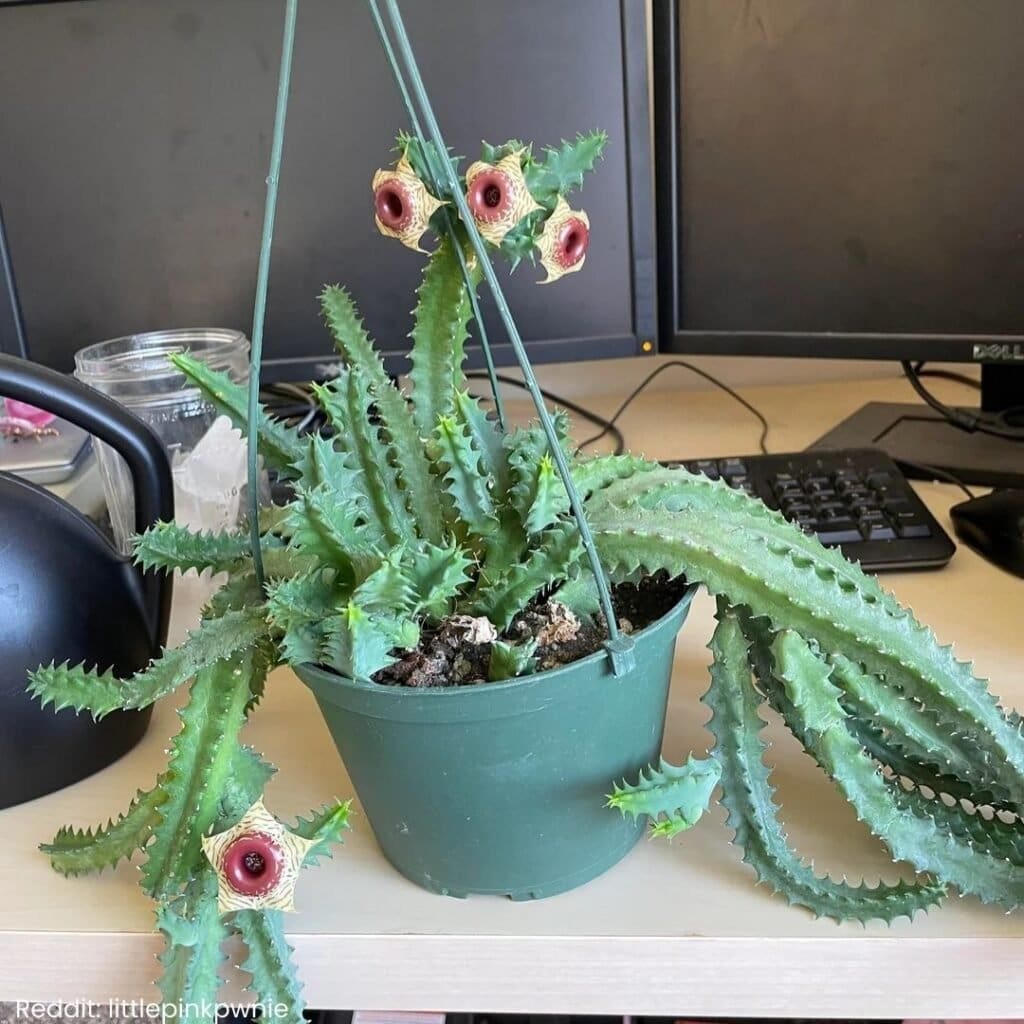
Caring for a lifesaver cactus can be easy if you’re aware of a few pitfalls. From environmental stressors to pesky pests, these plants face challenges that I can help you tackle.
Environmental Stressors
Keeping your lifesaver cactus in the right environment is key to its health 🌵.
First things first, these cacti love the sun. They need bright, indirect light for most of the day.
Too much direct sunlight can burn them, leaving unsightly marks.
Ever notice your cactus looking a bit limp? It might be too cold.
Keep them in spots where temperatures stay above 50°F (10°C) to keep them perky.
Remember, over-watering is a cactus crime😅.
These plants store water like pros, so they only need soaking when the soil’s bone dry.
Got pebbles? Add them at the bottom of the pot for better drainage.
Soil that’s too soggy can cause root rot, an ailment our succulent friends dread.
Managing Pests and Diseases
Ugh, pests—they can be a real bummer!
Lifesaver cacti aren’t exempt from these tiny invaders.
Mealybugs are the main culprits, those cute but pesky white fluffballs.
I’ve found that using a cotton swab dipped in alcohol is a safe and effective way to shoo them away.
It’s a bit like swabbing a monster under a microscope, isn’t it?
Fungal issues can also make a house call, especially if your plant is extra damp.
Offering good airflow around the cactus and using a fan occasionally can help.
If any unsightly spots or patches start to appear, consider adjusting your watering routine.
This quick fix often saves the day👌.
Special Considerations
Caring for a lifesaver cactus involves some unique factors. Toxicity is important if you have pets or kids, while winter dormancy affects how you care for it during the cold months.
Toxicity
Did you know that while the lifesaver cactus is quite charming, it does have a tricky side?
It’s mildly toxic if ingested, so if you have curious pets or little ones, take note! 🐶👶
I always keep mine on a high shelf, out of reach. It’s a simple move to prevent any unwanted tasting.
Use a bit of humor when explaining this to friends.
Just say, “My cactus may look tasty, but it’s not a snack!”
This can foster goodwill and awareness without alarm.
Remember, plants are to be admired, not munched on!
Keep it friendly and safe, and you’ll enjoy perfect harmony with your green buddy.
Winter Dormancy
Winter means snuggling into cozy blankets for me, and the lifesaver cactus wants similar treatment!
It enters a dormancy period.
During this time, reduce watering significantly.
Too much water can be harmful, leading to root rot.
The soil should be dry before you even think about watering it. 💧
Imagine your cactus is going on a winter break. It needs less to drink.
Place it in a cooler spot, but ensure there’s light—soft sunlight is ideal. A sunny windowsill works well.
Does your cactus hibernate like a champion in winter? Try these tips for a thriving plant come spring! 🌱
Winter Care
Winter can be a tough season for our lifesaver cacti friends. They like it warm and cozy, so I keep mine away from cold drafts.
Do you have a favorite warm spot in your house? Your cactus will love it there! 🌵
I water my cactus less in winter. It helps them rest and stay healthy.
My rule of thumb is to water only when the soil is completely dry.
It’s a bit like thinking, “Would I want a wet blanket in cold weather?”
Light is super important.
I make sure my cactus gets plenty of bright, indirect light. A sunny window is perfect!
Just be careful not to let the cold window touch them. Do you have a sweet spot like this? Let me know!
A word of caution: Avoid fertilizing in winter. Our cactus pals need a break from nutrients now.
It’s like how we rest after a big holiday meal, right? 🎉
Is your cactus looking a bit sad or droopy? Don’t worry! In winter, they slow down. It’s their way of taking a chill break.
Share a pic with me if you like; I’d love to see your cactus!
Keeping an eye on temperature and humidity helps me keep my cactus happy.
They’re not fans of sudden changes.
I try to maintain a steady environment, like a cozy winter blanket for them.
What steps have you taken to keep your cactus happy this winter? Share your tips! 😊
Displaying Your Lifesaver Cactus
I’m thrilled to share some tips to make your lifesaver cactus the star of your space. It’s all about picking the right spot and matching it with other plants.
Choosing the Right Location
When finding a spot, sunlight is key!
Pick a place that gets a decent amount of bright, indirect light.
Think about it: your cactus loves basking in a sunny window. 🌞
Just be careful not to leave it in direct sunlight too long, or it might get sunburned.
Another important factor is temperature.
Your cactus prefers a stable environment between 60-80°F (15-27°C).
If your home is cozy for you, it’ll likely be perfect for your cactus too.
Keep it away from chilly drafts or hot spots near heaters.
You’ll want to get creative with where to put your cactus.
A coffee table centerpiece or a corner of your windowsill could work wonders!
This plant can be like a little piece of art, so showcase it where you’ll see it often.
Companion Plants
Pairing your lifesaver cactus with the right plants adds charm.
Succulents make great companions. They share similar light and water needs, creating a harmonious little plant family.
I love arranging them in a decorative bowl or on a fun plant stand.
Ever think about adding some small decorative rocks or sand to the pot with your cactus?
It not only looks cool but also helps with drainage.
Remember, mixing plant textures can bring new life to a room. 🌵
Don’t be afraid to experiment!
Which plants will you choose to pair with yours? Let’s see those creative combos bloom!
Frequently Asked Questions
Caring for a Lifesaver cactus involves knowing when to water, the best conditions for growth, and how to handle certain quirks like its smell. Let’s dive into some common concerns. 🌵
How should I propagate my Lifesaver cactus for successful growth?
I find that the best way to propagate my Lifesaver cactus is through stem cuttings.
I let the cut ends dry for a day or two and then plant them in well-draining soil.
Keep the soil lightly moist until roots form. It usually takes a few weeks. 🌱
What are the best practices for taking care of a Lifesaver cactus outdoors?
When I grow my cactus outdoors, I make sure it gets plenty of indirect sunlight.
Too much direct sun can scorch it.
During winter, I protect it from frost.
I also check the soil often because rainwater can lead to overwatering.
Can you offer some tips for keeping my Lifesaver cactus healthy indoors?
Indoors, I place my Lifesaver cactus near a sunny window.
It’s important to use a pot with good drainage.
I water sparingly, about every two weeks, depending on humidity.
I also love adding small pebbles on top of the soil to keep it neat and help with drainage.
How often and how much should I water my Lifesaver cactus?
For watering, I stick to once every two to three weeks.
I make sure the soil is completely dry before watering again.
It’s like a dance to find the perfect balance—too much water, and it becomes unhappy. 💧
Why does my Lifesaver cactus have a strong odor, and is it normal?
Yes, that pungent smell is quite normal.
The odor can attract pollinators.
If it’s really strong, I sometimes move it to a more ventilated area.
It’s like having a stinky yet loved family member. 😂
When is the right time to repot a Lifesaver Cactus?
I usually repot my cactus every two years or when the roots start peeking out of the pot.
I choose a slightly larger pot and fresh soil.
Repotting in the spring gives the plant a boost as it enters its growing season.
Recommended Garden Supplies
| Product Image | Our Recommended Gardening Supplies | Check Offers! |
|---|---|---|
Top Top
Top
Top
Top
Top
Top
Top
Top | rePotme Houseplant and Tropical Classic Potting Soil Mix | Check Offer On Amazon |
 Top
Top
Top
Top
Top
Top
Top
Top | Espoma Organic Indoor Plant Food | Check Offer On Amazon |
 Top
Top
Top
Top
Top
Top
Top
Top | GooingTop LED Grow Light 6000K Full Spectrum Clip Plant Growing Lamp | Check Offer On Amazon |
 Top
Top
Top
Top
Top
Top
Top
Top | Soil Moisture Meter | Check Offer On Amazon |
 Top
Top
Top
Top
Top
Top
Top
Top | Govee Hygrometer Thermometer, Bluetooth Enabled! | Check Offer On Amazon |
 Top
Top | LEVOIT Humidifiers for Large Room(Best For Plants) | Check Offer On Amazon |
 Top
Top
Top
Top
Top
Top
Top
Top | Upgraded DIY Automatic Drip Irrigation Kit, 15 Potted Houseplants Support | Check Offer On Amazon |
 Top
Top
Top
Top
Top
Top
Top
Top | Stainless Steel Heavy Duty Gardening Tool Set | Check Offer On Amazon |
 Top
Top
Top
Top
Top
Top
Top
Top | Bonide Insecticidal Soap | Check Offer On Amazon |
 Top
Top
Top
Top
Top
Top
Top
Top | Bonide 32 oz Spray Neem Oil for Organic Gardening | Check Offer On Amazon |
 Top
Top
Top
Top
Top
Top
Top
Top | Garden Safe Fungicide | Check Offer On Amazon |

